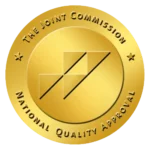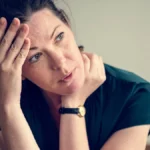Guarding Against Opioid Addiction: Prevention Tips
Opioids are a class of drugs that are typically prescribed by healthcare providers to manage moderate to severe pain, often following surgery, injury, or for specific medical conditions like cancer-related pain.
However, their use can sometimes lead to opioid addiction, a serious and growing concern among Americans. This occurs when patients develop a dependency on these drugs, leading to misuse and, ultimately, addiction.
In this article, we will explore various strategies to prevent addiction. In addition, we’ll also look into the effective addiction treatment options available, emphasizing that recovery is possible with the proper support and resources.

Key Takeaways
Opioids prescribed for pain relief can lead to addiction, but preventive measures and effective treatments are available. Here is what the article covers:
- Opioid addiction develops as the brain becomes dependent on opioid drugs, leading to misuse and withdrawal symptoms.
- Genetic, psychological, and environmental factors can all increase the risk of opioid addiction, creating a complex interplay.
- Preventing opioid addiction involves responsible use, patient education, safe disposal of unused opioids, and non-opioid pain management.
- Effective treatment options include detoxification, residential treatment, therapy, and support groups to promote recovery.
The Haven Detox-Little Rock offers comprehensive support in overcoming opioid addiction. Contact us at (501) 271-3342 for detailed information.
Opioid Addiction: How It Develops
Opioid addiction, a chronic brain disease, can develop when prescription pain medicines or illegal drugs like heroin are misused. It typically starts with the legitimate use of opioids for pain management, such as after surgery or for a major injury. At this stage, patients may not intend to misuse the medication, but the risk begins when they take the drugs for an extended period.
As time passes, the body may become tolerant to the opioids, meaning it needs more of the drug to achieve the same pain relief. This can lead to increased usage, and some individuals may start taking opioids more frequently or in higher doses without a doctor’s guidance. Gradually, physical dependence can develop, and individuals might experience withdrawal symptoms when they try to cut down or stop taking opioids.
What often follows is the psychological aspect of addiction. People may crave the euphoric feelings opioids provide, which can lead to a compulsive desire to use them, even when they are no longer needed for the alleviation of pain.
The cycle of physical and psychological dependence can make quitting opioids incredibly difficult. Therefore, it’s essential to seek help and support if you or someone you know is struggling with opioid addiction.
What Causes Opioid Addiction
The development of substance use disorders (SUDs) is a complex process influenced by several factors. Here, we explore the key contributors to the development of opioid addiction:
Prescription Medications
Prescription medications, a primary factor, play a significant role. Opioids, prescribed to manage chronic pain after surgery or injury, are highly effective. However, extended use or misuse can lead to dependency. Individuals might unintentionally slip into addiction as they become reliant on the medication, seeking higher doses to achieve the same pain relief.
Genetic Factors
Genetic factors also influence drug addiction susceptibility. Some individuals possess genetic traits that make them more prone to opioid addiction. Certain genetic variations can impact how the body metabolizes opioids or how the brain’s reward system responds to these substances, potentially increasing the risk of addiction.
Psychological Factors
Psychological factors also contribute to addiction. Mental health conditions like depression, anxiety, or past trauma can exacerbate the risk of opioid dependence. People might turn to opioids seeking relief from emotional distress, inadvertently developing a reliance on the substance to cope with their feelings.
Environmental Factors
Environmental factors play a crucial role in addiction development. Social and environmental influences, such as peer pressure, family history of drug abuse, or easy access to prescription opioids, can significantly impact an individual’s likelihood of developing an addiction. Stressful environments or communities with high substance abuse rates can also contribute to opioid addiction.
Recognizing these factors is essential in addressing and combating opioid dependence. It’s important to approach the issue from a holistic perspective, considering all these contributing factors.
From Awareness to Action: Preventing Opioid Addiction
Preventing opioid addiction when prescribed these medications involves various strategies to ensure safe and responsible usage. Here are some crucial steps for individuals:
Education and Awareness
Understanding the risks associated with opioid drugs is essential. Patients should be well-informed about the addictive nature of these medications, their potential side effects, and how to use them safely. This includes recognizing the signs of addiction and knowing when to seek help. Education empowers individuals to make informed decisions about their health.
Responsible Prescription Use
To prevent addiction, it’s vital to use opioid medications as prescribed by a healthcare provider. Patients should follow their doctor’s instructions precisely, never taking more than the prescribed dose or using the medication more frequently than recommended. If pain persists or worsens, consult your healthcare provider rather than adjusting the dosage independently.
Disposal of Unused Opioids
Once the pain has subsided, there might be leftover opioids in the medicine cabinet. Proper disposal is critical. Many communities have drug take-back programs, allowing individuals to dispose of unused meds safely. If such programs are not available, the United States Food and Drug Administration (FDA) recommends mixing unused opioids with an unpalatable substance (like coffee grounds or cat litter) and sealing them in a container before throwing them away.
Non-Opioid Pain Management
Explore non-opioid pain management alternatives. Physical therapy, over-the-counter pain relievers like acetaminophen or ibuprofen, and non-pharmacological interventions such as acupuncture or massage can effectively manage pain without the risk of opioid addiction. Discuss these options with your healthcare provider.
By following these strategies, individuals, especially teens and young people, can reduce the risk of addiction, contributing to a safer and healthier community.
Hope and Healing: Opioid Addiction Treatment
The journey to recovery from opioid dependence can be challenging, but there are various effective treatment options available to help individuals regain control of their lives. Here, we explore four essential components of addiction treatment:
Detoxification
Detoxification, or detox, is often the first step in treating opioid addiction. This process helps individuals safely and gradually reduce their opioid use under medical supervision. It’s like cleaning out a cluttered room before redecorating it.
Detox can be challenging due to withdrawal symptoms, but doctors can provide medications to manage these symptoms and ensure a more comfortable transition. The goal is to eliminate opioids from the body, paving the way for the next stages of recovery.
Residential Treatment
For some individuals, residential treatment, or inpatient treatment, is the most effective option. It’s like a temporary retreat to focus solely on recovery. In a residential facility, individuals receive 24/7 care and support.
Patients participate in structured therapy, counseling, and activities designed to address the root causes of addiction and develop essential coping skills. Residential treatment provides a safe and immersive environment away from the triggers of daily life.
Therapy and Counseling
Therapy and counseling are cornerstone components of opioid addiction treatment. These sessions are akin to having conversations with trusted guides who help navigate the journey to recovery. Individual and group therapy sessions allow individuals to explore the psychological and emotional aspects of addiction, develop healthier behaviors, and learn to manage cravings.
Cognitive-behavioral therapy (CBT), motivational interviewing (MI), and contingency management (CM) are some of the evidence-based approaches frequently used in addiction treatment.
Support Groups
Support groups, such as Narcotics Anonymous (NA) and SMART Recovery, provide a network of peers who understand the challenges of addiction. These groups offer a sense of community and shared experiences. It’s like having a team cheering you on during a race.
Participants in support groups can share their stories, offer encouragement, and hold each other accountable for maintaining sobriety. The connections formed in these groups can be a vital source of ongoing support in the recovery journey.
These treatment approaches are often combined or tailored to an individual’s needs. The goal is not just to stop opioid use but to enable a fulfilling life without the need for these substances.
Frequently Asked Questions (FAQ)
What are the prevention strategies for the opioid epidemic?
Preventing the opioid epidemic involves multiple strategies. These include:
Enhancing public awareness.
Improving access to addiction treatment.
Stricter prescribing guidelines for healthcare providers.
Promoting non-opioid pain management.
Increasing law enforcement efforts against illicit drug distribution.
These approaches work together to address the opioid crisis effectively.
How can opioid misuse be reduced?
To reduce opioid misuse, promoting non-addictive pain treatments, enhancing prescription monitoring, and expanding access to addiction treatment is vital. Educating the public on opioid risks and ensuring responsible medication disposal are essential steps. It’s like replacing unhealthy snacks with nutritious ones – making healthier choices to prevent misuse and addiction.
What are the best treatments for opioid addiction?
The best treatments for opioid addiction involve a combination of:
Medication-assisted treatment (MAT)
Therapy and counseling
Support from family members and friends
Prescription drugs like buprenorphine and methadone help manage cravings, while counseling provides strategies for recovery. Support groups offer a sense of community. It’s like combining tools, guidance, and a support network to create a strong foundation for overcoming addiction.
What are the current strategies to reduce opioid abuse?
To combat opioid abuse, current strategies include prescription monitoring programs, increased access to addiction treatment, and distribution of naloxone, a drug to reverse opioid overdose. By monitoring prescriptions, expanding treatment options, and distributing life-saving medication, we build defenses against opioid abuse.
Healing Steps, With The Haven Detox-Little Rock
Struggling with opioid use disorder (OUD) can be overwhelming. The severity of the problem is clear, but so is the hope for recovery. At The Haven Detox-Little Rock, we have a wide range of services to support your journey.
Our process begins with medical detox, where we help your body safely eliminate harmful toxins. We offer a residential rehab program that provides intensive 24/7 care to guide you toward lasting recovery. To replenish vital nutrients in your body, depleted by opioid addiction, we offer IV therapy.
Contact us at (501) 271-3342 today. Recovery is within reach, and we aim to help you achieve it.




